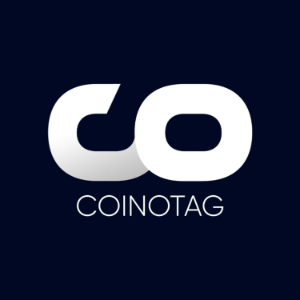Consensys Executive’s Astonishing $35M ETH Deposit Shakes DeFi Landscape
5 min read
The world of cryptocurrency is always buzzing with activity, but some movements grab attention more than others. Imagine an address that’s been silent for three long years suddenly waking up and moving a massive amount of digital assets. That’s exactly what happened recently, involving a significant Large ETH Deposit and sparking considerable interest within the crypto community, especially those watching the decentralized finance (DeFi) space. A Dormant Address Springs to Life: The Consensys Executive Connection According to data shared by The Data Nerd on X, an Ethereum address beginning with 0x955a, which had been dormant for approximately three years, recently became active. What makes this particularly noteworthy is the suspicion that this address belongs to Russell Verbeeten, the Managing Director at Consensys Canada. Consensys, for those unfamiliar, is a major software company building core infrastructure and applications for the Ethereum blockchain. The activity wasn’t minor. This address deposited a staggering 20,000 ETH into the Aave Protocol . At the time of the deposit, this amount was valued at roughly $35.46 million. Such a substantial movement by an address potentially linked to a high-profile individual within a key Ethereum ecosystem company naturally raises questions and speculation. Understanding the Destination: What is Aave Protocol and DeFi Lending? The destination of this significant Large ETH Deposit was Aave, one of the largest and most established decentralized finance (DeFi) protocols. But what exactly is Aave, and why would someone deposit millions of dollars worth of ETH into it? Decentralized Lending and Borrowing: Aave operates as a non-custodial DeFi Lending protocol. This means users can deposit cryptocurrencies to earn interest (acting as lenders) or borrow cryptocurrencies by providing collateral. Liquidity Pools: Assets like ETH are deposited into liquidity pools. These pools then become the source from which others can borrow. Lenders earn a variable interest rate based on the utilization of the pool. Permissionless Access: Unlike traditional finance, accessing Aave’s services doesn’t require identity verification or permission from a central authority. It’s all managed by smart contracts on the blockchain. Earning Passive Income: One primary reason to deposit assets like ETH into Aave is to earn passive income through lending. The deposited ETH starts accruing interest almost immediately. By depositing 20,000 ETH, the address is essentially making this large sum available for others to borrow on the Aave platform, and in return, it will earn yield on the deposited amount. This is a common strategy for crypto holders looking to put their assets to work rather than simply holding them idle. Why Now? Speculating on the Motives Behind the Large ETH Deposit The fact that the address was dormant for three years before making this move adds an extra layer of intrigue. Several potential reasons could explain the timing and the action: Seeking Yield in a Stable Market: After a period of market volatility, perhaps the owner sees the current conditions as favorable for earning yield through DeFi Lending on a reputable platform like Aave. Preparing to Borrow: Depositing collateral is the first step to borrowing on Aave. The owner might intend to borrow stablecoins or other assets against their ETH holdings without selling the ETH itself. This is often done to gain liquidity for other investments, cover expenses, or engage in leveraged trading positions. Strategic Positioning: The move could be part of a larger, strategic financial play related to market expectations or personal financial planning. Increased Confidence in DeFi: After years, perhaps the individual’s confidence in the maturity and security of major DeFi protocols like Aave has increased to the point where they are comfortable deploying significant personal capital. Without direct confirmation from the address owner or Mr. Verbeeten, these remain speculations. However, the scale of the deposit and the profile of the suspected owner make these speculations particularly relevant to market watchers. The Ethereum Whale Angle: Tracking Significant Movements A deposit of 20,000 ETH firmly places this address in the category of an Ethereum Whale – an individual or entity holding a very large amount of ETH. Tracking whale movements is a common practice in the crypto market because their large trades or deposits can potentially influence market dynamics or signal underlying sentiment. While a single deposit into a lending protocol doesn’t have the same immediate price impact as a large sell-off on an exchange, it does add significant liquidity to Aave’s ETH pool. Future actions by this address, such as borrowing heavily against the collateral or withdrawing the funds, will likely be closely watched by on-chain analysts. Implications for the Aave Protocol and DeFi The influx of 20,000 ETH is a positive development for the Aave Protocol itself. More deposited assets mean deeper liquidity, which can facilitate larger borrowing operations and potentially lead to more stable interest rates. It also serves as a vote of confidence in the protocol’s reliability and security, especially when the deposit comes from an address linked to a prominent figure in the Ethereum ecosystem. For the broader DeFi Lending space, this event highlights the increasing adoption and utilization of these protocols by significant players, potentially including industry insiders using personal funds. It reinforces the narrative that DeFi is maturing and becoming a viable alternative for managing substantial digital asset portfolios. What Does This Tell Us About the Consensys Executive’s View? If the address indeed belongs to the suspected Consensys Executive , Russell Verbeeten, the move could be interpreted in several ways: It demonstrates a personal belief in the utility and security of DeFi protocols built on Ethereum, the very ecosystem Consensys supports. It might reflect personal financial management strategies that leverage the unique opportunities available in DeFi, such as earning yield or accessing liquidity without selling assets. It could be seen as a quiet endorsement of decentralized platforms, showcasing how even those deeply involved in building the ecosystem use it for their own benefit. It’s important to reiterate that this link is based on suspicion reported by The Data Nerd. Official confirmation would provide more clarity, but the on-chain activity itself is undeniable and significant. Conclusion: A Whale’s Return and a Boost for DeFi The sudden activity from a long-dormant address, potentially linked to a Consensys Executive , and its subsequent Large ETH Deposit into the Aave Protocol is a fascinating development. This move by a potential Ethereum Whale into the heart of DeFi Lending underscores the growing sophistication and adoption of decentralized finance protocols. Whether the motive is yield generation, strategic borrowing, or something else entirely, the millions of dollars worth of ETH now sitting in Aave are a clear signal that significant capital is comfortable operating within the DeFi ecosystem, reinforcing its position as a key component of the broader crypto landscape. To learn more about the latest Ethereum whale trends, explore our article on key developments shaping DeFi lending institutional adoption.

Source: Bitcoin World



